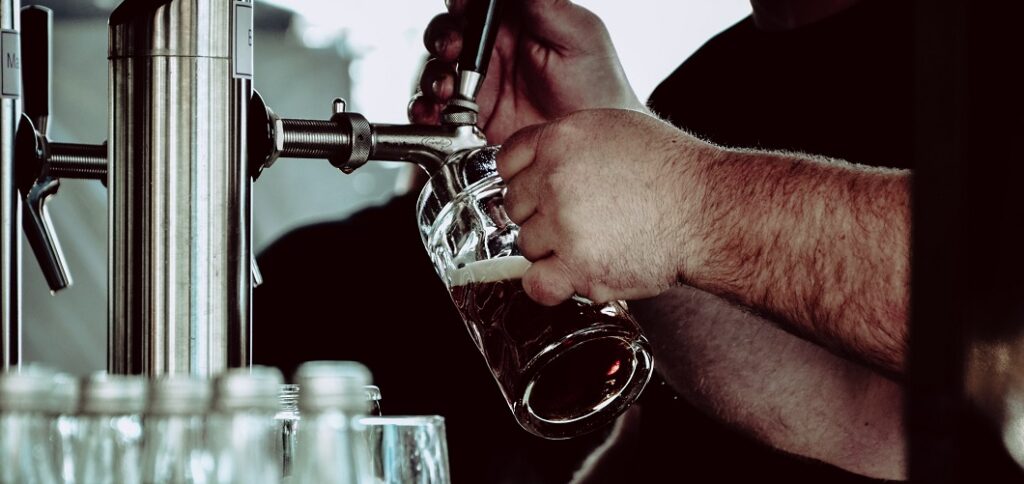Austria’s brewing industry takes stock of 2020

The coronavirus pandemic and repeated lockdowns in catering have deeply impacted Austria’s brewing industry.
In the past year, domestic beer sales sank by 4% to approximately 8.3 million hl, and exports fell by 5.7%. Sales developments in catering were also dramatic: Approximately 840,000 hl less draft beer and tank beer was sold in 2020 than in 2019 (all amounts mentioned include non-alcoholic beer).
Siegfried Menz, chairman of the Austrian Brewers Association, describes the situation accordingly:
“The pandemic has set us back a good 20 years. Last year, domestic output was lower than it has ever been since the turn of the millennium.”
Austrian beer culture at risk post-pandemic
Siegfried Menz is concerned about Austrian brewing industry’s development: “After several months of lockdowns in the catering and hotel industries, exacerbated by the completely underutilized event scene, many breweries have now reached their limits. During normal years, around one third of beer went to catering, but for months this extremely important area has essentially ceased to exist. On average, our breweries have struggled with total revenue losses of 20 percent. Some, particularly small and medium-sized breweries that are very active in the catering and event sector, are reporting losses of up to 70 percent. Our local beer culture diversity, and with it the beer country of Austria, is in danger.”
According to Menz, the severity of this is also underscored by the forecasts of the creditors associations. These indicate that, just as in Germany, a wave of bankruptcies is feared in the second half of 2021. In turn, up to 29% of companies in the Austrian hotel and catering sectors could disappear.
Additional pressure from high beer taxes
The economic performance of Austrian breweries generates around €700 million of the country’s treasury every year. The success of the local beer hinges on the use of high-quality, natural and raw material from Austria, averaging 150,000 tons of malting barley and 500 tons of hops each year.
While Austrian breweries must pay €24 per hectoliters of beer to the treasury on average, in Germany they only need to pay around €10. Menz demands that “this blatant discrimination must be stopped, with more than double the taxation. The beer tax must be reduced to a competitive level, such as by 50 percent.” In particular, he is criticizing the fact that Austrian breweries have been subjected to this additional pressure during the coronavirus crisis.
The brewers’ association would also welcome rapid and uncomplicated expansions of the beer tax quantity scale from the current 50,000 hl to 200,000 hl of annual output. Menz explains: “Above all, the reduced taxation rate would benefit the small and medium-sized breweries hit particularly hard by the crisis, but it would only cost the tax authority approximately €1.4 million, roughly 0.7 percent of the entire beer tax revenue. This would save many companies and secure many jobs.”.
While practically no layoffs were issued in Austria’s breweries by mid-March 2021, the working hours of approximately 3,000 people were reduced. That’s more than three quarters of everyone directly employed by the breweries.
Most popular Austrian beers in 2020

Even during coronavirus, “Märzenbiers” were most popular, with a total of 5.6 million hl, slightly increased as compared to the previous year (+31,395 hl or +1%). Their market share of approximately 68% easily positions them in first place among the most popular Austrian beer varieties.
However, this stability was not achieved by other beer varieties, with the exception of low-alcohol beers, whose market share is already less than one percent. As such, 2020 declines include:
- “Other strong ales” (-175,594 hl or -14%)
- “Special” (-62,120 hl or -17%)
- “Pilsners” (-60,469 hl or -24%)
- “Radlers with alcohol” (-36,374 hl or -9%)
- “Wheat beers” (-28,401 hl or -25%)
Higher share of reusable containers
Looking at container developments, draft and tank beer declines in Austria stand out above all (-839,241 hl or -46%). This is due to the closed catering industry, as well as the depletion of festivals and major events.
In contrast, 0.5 liter glass bottles built on their pole position in the Austrian beer market. In 2020, they achieved a market share of 52%, with a volume of about 4.3 million hl. In comparison, the 0.33 liter bottle achieved an unchanged market share of only approximately 10% (about 816,000 hl).
Overall, the share of reusable beer bottles was approximately 62% last year. In Austria it even reached 66%. The former CEO of the brewers’ association, Jutta Kaufmann-Kerschbaum, praised this future-oriented development in the brewing industry: “We are very pleased with the consistently high share of reusables. This reflects the high level of environmental awareness among Austrian beer-lovers. And that is a good thing, because despite the coronavirus and the economic crisis, we must not forget the major challenges of climate and resource protection.”
Want to share your experiences and innovations with an international audience? Then please join us by participating at the next drinktec taking place from September 12 to 16, 2022 in Munich.
This article is powered by Verlag W. Sachon.
